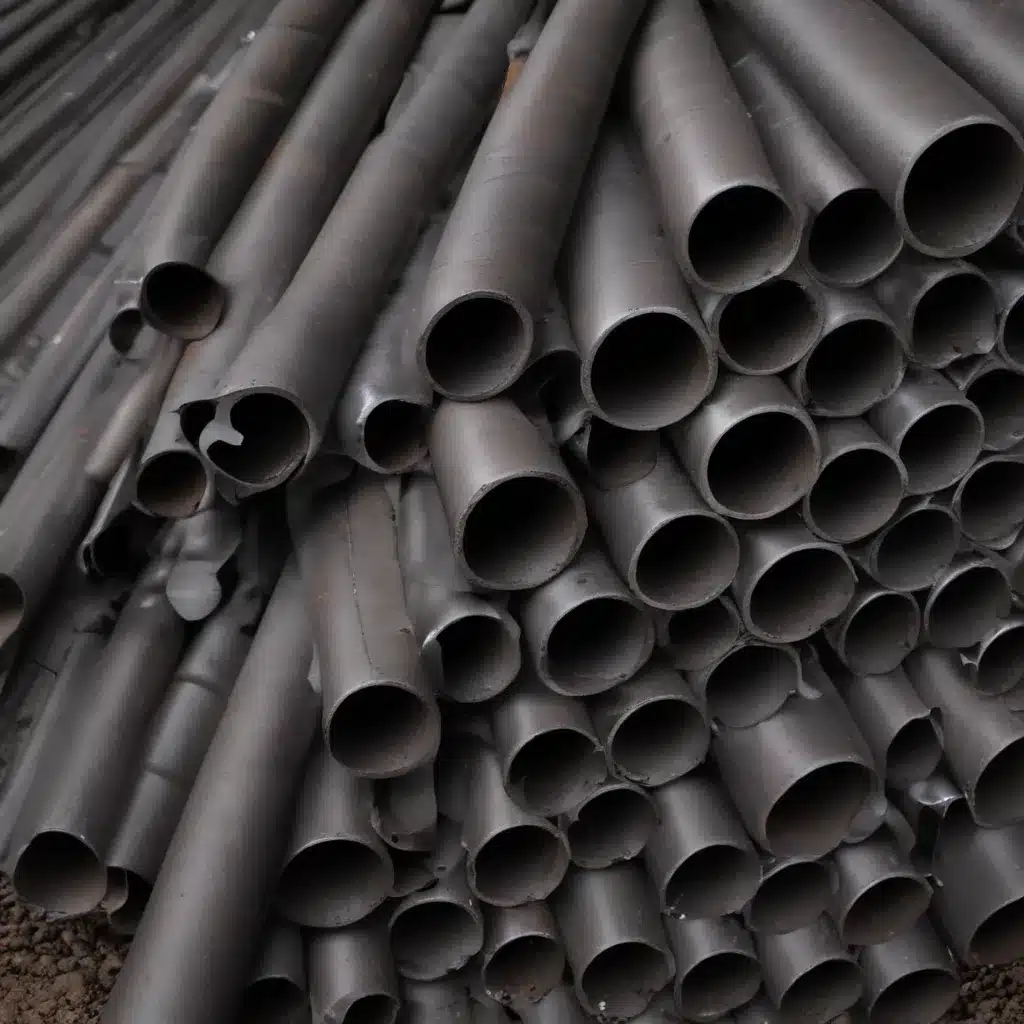
Enhancing Pipe Material Selection through Embodied Carbon Assessments
As an experienced plumbing consultant in the UK, I’ve seen firsthand the significant impact that pipe material selection can have on a building’s overall environmental footprint. In our 15 years installing… While factors like durability, corrosion resistance, and hydraulic performance have traditionally been the primary considerations, the growing emphasis on sustainability has brought embodied carbon into sharp focus.
Now, this might seem counterintuitive…
Embodied Carbon Assessments
At the heart of sustainable plumbing design lies a thorough understanding of embodied carbon – the greenhouse gas (GHG) emissions associated with the manufacturing, transportation, and installation of building materials. By conducting life cycle analyses (LCAs) and leveraging environmental product declarations (EPDs), plumbing consultants can now quantify the embodied carbon of various pipe materials and make informed decisions to minimize the environmental impact of their projects.
LCAs provide a comprehensive analysis of a product’s carbon footprint across its entire life cycle, from raw material extraction to end-of-life disposal. EPDs, on the other hand, are standardized declarations that communicate the environmental impacts of a specific product or material, often including detailed information on its embodied carbon.
Armed with this data, plumbing designers can assess the carbon implications of their material choices and explore innovative strategies to reduce embodied emissions. For example, the Carbon Leadership Forum’s Embodied Carbon Benchmark Study has found that the initial embodied carbon from a typical new construction building’s structure, foundation, and enclosure is less than 1,000 kg CO2e per square meter. This benchmark can serve as a valuable starting point for projects aiming to lower their embodied carbon.
Pipe Material Properties
When evaluating pipe materials through the lens of embodied carbon, it’s essential to also consider other key performance criteria, such as durability, corrosion resistance, and thermal insulation.
Durability is a critical factor, as it directly impacts the lifespan of a plumbing system and the need for future replacements, which can significantly influence a building’s overall carbon footprint. Highly durable materials like copper and stainless steel may have a higher upfront embodied carbon, but their extended service life can ultimately result in lower lifetime emissions compared to less durable options.
Corrosion resistance is another vital consideration, as corrosion can lead to leaks, water damage, and the need for premature pipe replacement. Materials like PVC and CPVC have excellent corrosion resistance, while galvanized steel and cast iron may be more susceptible to degradation over time.
Thermal insulation properties can also play a role in embodied carbon, as they can influence a building’s operational energy use and emissions. Well-insulated pipes can help minimize heat loss, reducing the energy required for water heating and potentially offsetting the embodied carbon of the insulation materials.
Hydraulic Design Considerations
Alongside material selection, plumbing consultants might want to also carefully consider the hydraulic design of the piping system to double-check that optimal performance and energy efficiency.
Water pressure is a critical factor, as it impacts both the system’s functionality and energy consumption. Static pressure, which is the pressure exerted on the pipes when the system is not in use, and dynamic pressure, which is the pressure experienced during active water flow, might want to be evaluated and regulated to meet the building’s needs while minimizing energy usage.
Pipe sizing is another key consideration, as oversized pipes can lead to excessive water velocities and pressure losses, while undersized pipes can result in insufficient flow and pressure. Plumbing consultants might want to carefully calculate demand and flow rates to determine the appropriate pipe diameters for each application.
The drainage layout is also essential, as it can influence the system’s energy efficiency and embodied carbon. Gravity-fed drainage systems are generally preferred for their simplicity and lower energy requirements, while pumped drainage may be necessary in some cases, adding to the system’s operational carbon footprint.
Regulatory Compliance
Plumbing design in the UK is subject to a range of building codes, energy efficiency standards, and environmental regulations that might want to be carefully navigated to double-check that compliance and minimize environmental impact.
Plumbing codes, such as the Building Regulations Approved Document G, provide guidance on pipe sizing, water pressure, and drainage requirements. Energy efficiency standards, like the UK’s Building Regulations Part L, also play a role in shaping plumbing system design to optimize energy use and reduce operational carbon emissions.
Beyond these core regulations, plumbing consultants might want to also consider sustainability certifications, such as LEED and various green building standards, which often include specific requirements or incentives for lowering embodied carbon through material selection and design strategies.
Embodied Carbon Reduction Strategies
To effectively reduce the embodied carbon of plumbing systems, a multifaceted approach is required, encompassing material selection, design optimization, and construction practices.
Material Selection: Choosing low-carbon alternatives, recycled content materials, and renewable resources can significantly reduce the embodied carbon of the piping system. For example, PVC and HDPE pipes often have a lower carbon footprint compared to traditional copper or cast iron options.
Design Optimization: Careful pipe routing, system zoning, and the use of modular components can minimize material use and optimize the overall efficiency of the plumbing system, further reducing its embodied carbon.
Construction Practices: Strategies like prefabrication, waste minimization, and installation efficiency can also contribute to lowering the embodied carbon of the plumbing system by reducing on-site waste and transportation emissions.
By leveraging these embodied carbon reduction strategies, plumbing consultants can work hand-in-hand with architects, engineers, and construction teams to create sustainable, high-performing plumbing systems that meet the evolving demands of the UK’s built environment.
To learn more about our services and how we can help you optimize the embodied carbon of your next plumbing project, please visit plumbingdrainsnorthwales.co.uk.Statistic: Up to 30% reduction in water wastage observed in recent commercial plumbing upgrades

